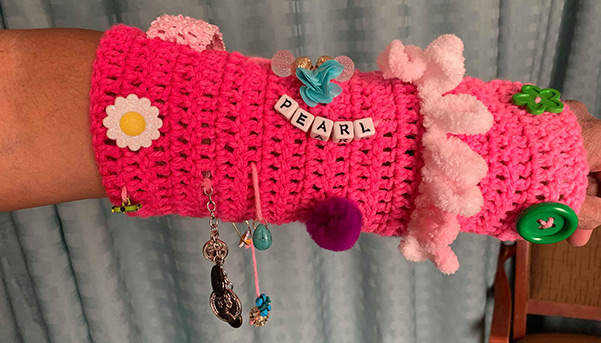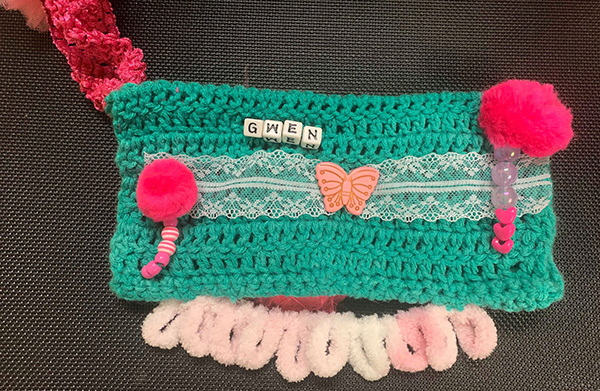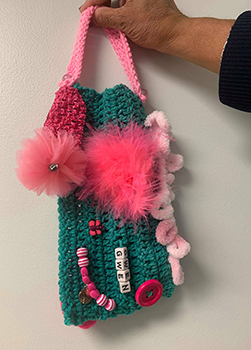Idle Hands: Calming the Chaos with Distractions
If you’re a caregiver, chances are good that you are familiar with that old “idle hands” saying.
Whenever Daddy was hospitalized, he would often grab at wires or IV lines or whatever was handy and pull at them. He’d get sheets and hospital gowns turned sideways by tugging at the fabric. After Daddy’s brain hemorrhage, we had a need to keep his hands busy at home as well.
He was a mechanic his whole life. He didn’t like his hands to be still, and he certainly didn’t let his mind be still either. He was the kind of guy you could give those twisted metal puzzles to and he’d have them solved in about ten seconds flat. Daddy was admitted to a facility for rehabilitation after the hemorrhage. While he was there, he got into the habit of disassembling his wheelchair with no tools. I am sure it had a mechanical problem that he could fix, being the expert and all. Luckily, our cousin was the guy over maintenance there and forgave his old uncle for doubling his work.
Distracting Daddy with toys
In an effort to keep both Daddy’s mind and hands busy, we bought a few toys for him to “fiddle” with. One that we still have around here somewhere was hourglass-shaped. The clear plastic contained little paddle wheels and gears, and was filled from top to bottom with water and brightly colored oil. In water and oil’s classic fashion, the two stayed separated, and when turned upside down the oil would slowly drip from the top to the bottom through the channels and wheels. I even found myself zoning out watching it a few times.
Whether it helped him much or not, it had a calming effect on me. “Liquid motion toy” will give you tons of results on any search engine if interested. I was reminded of this type of gadget earlier this month when I had a conversation with a friend.
My friend distracts her loved one in a different way
My friend is in the same boat many of us have found ourselves in. Instead of navigating through oil and water, though, she has taken to beads and yarn.
Her partner’s mother has been diagnosed with Alzheimer’s disease. She recently shared photos with me of her ingenious crochet projects that have helped them with that annoying fidgeting problem I spoke of.
She’s fashioning yarn, beads, lace, and other accoutrements into wearable sleeves. She incorporates lots of different colors and textures to help keep her mother-in-law’s eyes, mind, and fingers busy. Not only does it keep her busy, but the garment also serves a second important function. These “twiddle sleeves” can also be used to keep bandages or IV lines covered. Anyone who has dealt with a less than ideal patient will appreciate this function.


 Making these sleeves has also brought comfort to both the person with Alzheimer's and the caregiver, in this case. It was obvious by talking to my friend, that this has given her the feeling of purpose in the situation. All too often, we feel like our hands are tied. We feel helpless. We feel like we don’t quite know what to do. She told me that making these sleeves has been cathartic for her, and her little project has grown. She has made more sleeves for nurses who care for people in a memory care unit. She is making an impact that likely has a ripple effect for the family members of the wearers of her sleeves. I am pretty sure she wears her heart on her own, and her community is better for it.
Making these sleeves has also brought comfort to both the person with Alzheimer's and the caregiver, in this case. It was obvious by talking to my friend, that this has given her the feeling of purpose in the situation. All too often, we feel like our hands are tied. We feel helpless. We feel like we don’t quite know what to do. She told me that making these sleeves has been cathartic for her, and her little project has grown. She has made more sleeves for nurses who care for people in a memory care unit. She is making an impact that likely has a ripple effect for the family members of the wearers of her sleeves. I am pretty sure she wears her heart on her own, and her community is better for it.

Join the conversation